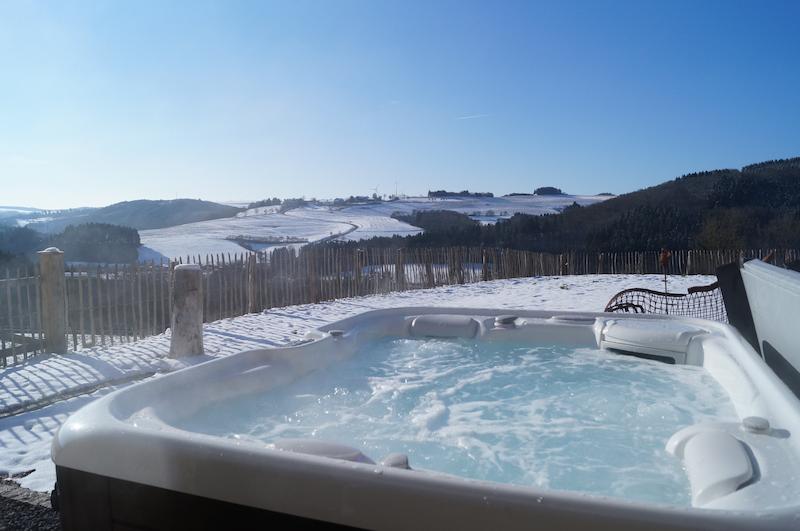A hot water tub is a delightful luxury and often a necessity for some households. Regardless of the "why" you have one, it is essential to learn how to take care of your hot tub.
It might amaze you, but while the maintenance regime is almost the same for all three, each of these is technically a separate entity.
Plus, this guide will specifically refer to hot tubs that may be fixed, portable, or inflatable.
A little note: the term "hot tub" is often used interchangeably for "spas" or "jacuzzis", so we are referring to the same thing here when we mention "Hot tub".
Consequences of improper hot tub maintenance
A hot tub can cost anywhere between $3,000 for entry-level models to well over $15,000 for top-of-the-line options. Maintenance of a hot tub comes at around $20 a month, but not taking care of it can cost hundreds or maybe thousands of dollars in repairs.
Fixes like maintaining proper water chemistry or regular cleaning will eliminate the chances of big problems like a dirty filter, a damaged pump, or health hazards.
How to have a perfect hot tub
Looking after a hot water tub drills down to three pillars:
- Regular cleaning
- Proper water chemistry
- Timely maintenance of components
The best ways to clean a hot tub

The process of cleaning your hot tub depends upon its recent use. If you are opening your hot tub after a while, it involves a thorough cleaning of all the components. So, it is always best to follow scheduled maintenance.
Cleaning hot tub with cloudy water
A hot tub can have cloudy water due to a myriad of reasons. These include heavy use of the tub, algae infestation, chemical imbalance, broken filtration system, the air in the system (causing foam), poor water circulation, or introduction of body skin care products in water.
Here’s the step-by-step process of how to deal with it:
- If your hot tub sits outdoors, skim out any debris that may have fallen into it.
- Check the water chemistry.
- Double shock the tub with chlorine or bromine-based shock
- Rinse the filters and spray or soak them with chemical cleaner for a thorough output
- If it looks like your hot tub has algae, use an algaecide or water clarifier.
- If nothing works, drain the tub, scrub it thoroughly, and fill in fresh water.
- Check the water balance and add the appropriate chemicals for adjustment.
Cleaning a hot tub with clear water
Sometimes a hot tub has clear water but shows chemical imbalance after testing. Use appropriate chemicals to bring the chemistry back to normal. Plus, clean the filters, pump, and other components for good measure.
You must also avoid using household chemicals to clean your hot tub. These include:
- Household Cleaners: These can be absorbed by the filter media, causing foaming problems.
- Bleach: The polyester threads of the filter media will get damaged through bleach
- Running filter through a dishwasher: While this may work in the short term, it will eventually shorten the lifespan of your filter.
How do I test the water chemistry of the hot tube?
Testing the water chemistry of your hot tub is similar to that of a pool. There are three methods to do it yourself, or you can take a sample of your tub water to the nearest pool water laboratory for testing.

Test strips
Using pool test strips is an easy DIY method of checking your hot tub water chemistry.
You have five-way, six-way, and seven-way test strips that measure five, six, or seven parameters. These include pH, total hardness, alkalinity, total chlorine, total bromine, free chlorine, and cyanuric acid.
It is also the most inexpensive method of checking your water chemistry, but it takes time and effort.
Test kit
Pool test kits are bigger and more expensive than test strips. They are like a portable lab setup where you have different liquid chemicals. You mix the reagents with your pool water sample and read the outcome to determine the levels of elements in the water.
Smart water monitor
The Sutro Smart Water Monitor is a revolutionary invention in the pool water testing space. It is a battery-operated monitor which delivers constant updates of your pool water chemistry directly on your mobile app.
It ensures that you don’t have to wait hours and put in a ton of effort to check the parameter levels. Although it’s a bit pricey, it is a one-time investment that’ll save you time.
Chemicals needed in your hot tub

While a pool may need an array of chemicals for maintenance, these are the most important ones you need for your hot tub:
pH balancers
You will need a pH increaser and a pH reducer, depending on the latest pH levels of your hot tub. These are the most basic (and also important) chemical additives for your hot tub.
Sanitizers
A sanitizer is for disinfecting water and keeping it clean. It also helps with preventing issues like cloudy water. You can choose a chlorine-based, bromine-based, or mineral sanitizer.
Spa shock
A spa shock helps break down organic waste in the water and clears up the water quickly. While pool owners mostly use chlorine-based shock, most spa and hot tub owners prefer non-chlorine shock. It is low in odor and will not potentially damage the interiors of the tub.
Defoamer
A defoamer is a chemical that helps get rid of foam instantly in spas or hot tubs. However, it is a quick fix, and you must thoroughly clean a foaming hot tub.
Optimal chemical levels for your hot tub
These are the optimal levels for the water chemistry parameters in your pool:
- The pH: The ideal pH for hot tub water ranges between 7.2 and 7.8. If it falls below that, the water is too acidic and may damage the pool components. If it goes higher, it can cause cloudy water and skin hazards.
- Total Alkalinity: The ideal range is between 80-120 ppm (parts per million). You may need to raise or lower total alkalinity to keep the pH of your pool water stable.
- Chlorine Levels: The ideal levels are between 2 and 4 ppm.
- Free Chlorine Levels: The perfect free chlorine levels for a hot tube are 1-3 ppm.
- Bromine Levels: If you have been using a bromine-based sanitizer, the ideal levels fall between 3-5 ppm.
- Total Hardness: 100-250 ppm for pools with acrylic interiors and 250-450 ppm for plaster finishes.
How often should you add chemicals to the hot tub?
Every chemical needed in your hot tub has an optimal frequency for use. Some are required after heavy use, whereas others are useful for quarterly or annual maintenance.
- Sanitizer: Twice or thrice a week based on its level in the water.
- Shock: Once a week or after each heavy use.
- pH and Alkalinity Balancers: Every couple of days, based on the test results.
- Bleach: Weekly in diluted proportions for cleaning the cover.
- Filter Cleaning Chemicals: Rinse once a month and soak every quarter (four months).
The hot tub maintenance schedule:
Routine maintenance of your hot tub not only helps with a crystal clear and running pool. It also saves you from the overwhelming inconvenience of dealing with a dirty pool all at once.
Here’s the daily, weekly, monthly, and yearly maintenance plan you can follow.
Daily maintenance
Here’s a daily maintenance checklist for your hot tub:
- Check the hot tub cover and ensure it is clean. Wipe off any leaves, dirt, or debris that may have accumulated over it.
- Check the water temperature. Any drastic temperature changes indicate a problem and need a thorough check.
- Inspect the cover and the tub for signs of damage.
Weekly maintenance
Do this twice or thrice a week. The aim here is to prevent the water chemistry levels from fluctuating.
- Use test strips or the Sutro Pool Water Monitor to check the alkalinity of the pH of the pool water.
- If the levels are not optimal, adjust the alkalinity and pH with the appropriate chemicals.
- Check the sanitizer (free chlorine or bromine) levels in the tub water. Optimal sanitizer levels are essential to curb the growth of microorganisms in the water.
- Shock the tub if the sanitizer levels are too low. Ideally, you can shock your hot tub once every week.
- Wipe the insides of the pool, just above the water line, with a wet cloth.
- Clean your spa/hot tub cover properly with water or bleach.
Monthly maintenance
These checks should be conducted once every month in addition to the daily and weekly schedules. It usually takes an hour or so.
- Treat the filter with a good cleaning chemical. You should rinse and soak the filters to ensure proper cleaning.
- Inspect your hot tubs jets, and also look for any other visible problems in water circulation.
- Have your hot tub inspected by a professional to get a comprehensive report.
Quarterly maintenance
Your hot tub deserves a detailed check once every season. The changes in climatic conditions cause fluctuations in factors that affect water chemistry.
- Drain the hot tub and conduct a thorough cleaning on the inside and outside using the right chemicals.
- Soak and clean your filters, and look for any signs of possible damage throughout the hot tub.
- Refill the tub and check the water chemistry. Take appropriate steps to balance it.
Yearly maintenance
Do an overhaul of the hot tub once every year. It is crucial if you don’t follow the regular maintenance schedule or use your hot tub less often. However, a complete annual teardown is necessary anyways.
- Purge all the plumbing lines to remove any biofilm or bacteria buildup.
- Inspect all the wiring and hardware for any damage.
- Call a professional pool maintenance service for a detailed report.
Tips for easier maintenance
Maintaining a hot tub all year round can be tedious for many. However, you may find a few tips from us useful for this:
- Drop a few tennis balls in your hot tub. The fibers on them soak up oil, lotions, and other similar materials.
- Add a hose filter to the hose when filling up the water.
- Always keep your hot tub covered. It will drastically reduce the chances of contamination.
- If you are short on time, drain, clean, and refill the hot tub. You will save money and a lot of time on balancing the chemistry.
- Understand the difference between hot tub/spa chemicals and pool chemicals. They are not always the same.
- Winterize your hot tub during the winter months.

